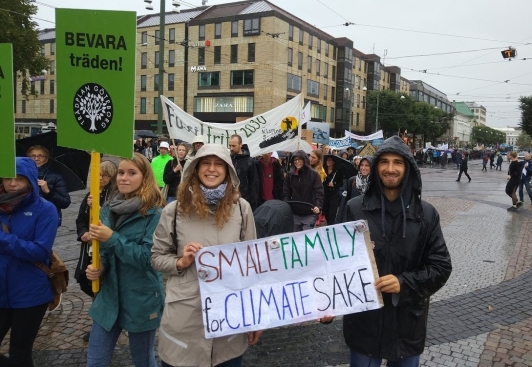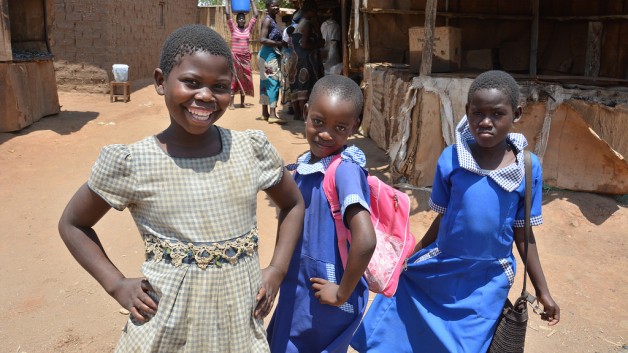Item Link: Access the Resource
Date of Publication: February 22, 2019
Author(s): The Overpopulation Project
Here at The Overpopulation Project, we try to keep a positive outlook. Although many environmental trends are grim, there exist clear paths forward toward a more sustainable world: one where people steward resources for the future and share habitat and resources generously with other species.
Recently, a correspondent wrote challenging us to identify solutions to the demographic and environmental problems we write about. We appreciate the reminder to remain forward looking and in response share the ideas below. Obviously, no one person or organization can cover all these efforts. But each of us can do something and together we can create a sustainable world.
These are personal and policy suggestions that we and others study. Some points are obvious, others fairly well established, but all need more research. If you are a scientist or scholar, one of the most important actions to take is to address population matters in your research, or join other researchers who are doing so.
What suggestions would you add or take off this list? Which ideas need further research? We would love to hear from you!
Actions on the individual level
- Have fewer children! One is good, two is enough – read more here
- Consider adoption!
- Read, educate yourself about population issues – read more here
- Reduce your personal consumption: go vegan, limit flying, share your household with others, and more
- Educate your teenage child(ren) about sex and contraception early, without taboos
- Spread your knowledge and concern among your friends and family, raise awareness about overpopulation on social media – read more here
- Donate to family planning programs in your own or other countries – for example to International Planned Parenthood, FP2020 or another equally deserving organization
- Vote for politicians who acknowledge the detrimental impacts of population growth and propose political solutions

Actions on the community level
- Join local environmental groups, encouraging them to “connect the dots” between population and the environment and address population issues
- Write opinion pieces for local newspapers, contact local media sources requesting more reporting on population issues – create demand!
- Municipalities should set growth management boundaries, discouraging sprawl development on their fringes
- Towns and cities should purchase surrounding lands, or the development rights to such lands, in order to set them aside as nature preserves and open space
- City councils should pass resolutions accepting limits to growth, and directing their national governments to develop policies to stabilize or reduce national populations

Actions on the national level
In high fertility developing countries, governments should …
- Generously fund family planning programs
- Make modern contraception legal, free and available everywhere, even in remote areas
- Improve health care to reduce infant and child mortality
- Restrict child marriage and raise the legal age of marriage (minimum 18 years)
- Introduce obligatory education as long as possible (minimum until the age of 16), and generously fund the necessary infrastructure

In low fertility developed countries, governments should …
- Embrace rather than fight aging and shrinking societies – read more here
- Reorganize pensions and other socio-economic systems to accommodate aging societies
- Eliminate baby bonuses, government funding for fertility treatments, and other incentives to raise fertility rates
- Reduce immigration numbers (at least to a level that will stabilize national populations, preferably to one that will lower them) – read our blog here
- Reduce resource consumption and pollution through an effective mix of taxes, incentives and regulations

In every country, governments should …
- Empower women, assuring equal rights, treatment and opportunities for both genders
- Provide information and access to reproductive health care, including all types of low cost, safe, effective contraception – read more here
- Make sterilization free, for men and women, or at least covered under all healthcare plans
- Legalize abortion without restrictions or social stigma – read our blog here
- Integrate family planning and safe motherhood programs into primary health care systems
- Make population and environmental issues and sex education part of the basic educational curriculum
- Disincentivize third and further children non-coercively, by limiting government support to the first two children
- Create a national population policy built around an optimal population size, and work to achieve it
- Set aside half the national landscape free from intensive development and dedicated to biodiversity protection – read more here

Actions on the global level
- Make “ending population growth” one of the UN Sustainable Development Goals – read our blog here
- Greatly increase the amount of foreign aid going to family planning – learn more here
- Change the current foreign aid distribution, giving more support for health and education, while ending international military aid – read more here
- Global religious leaders should approve modern contraception methods and forcefully reject a fatalistic view of procreation – read more here
- Financially support media programs designed to change social norms to bolster family planning, best example is Population Media Center
- Hold a new global population conference, the first in twenty-five years, to reaffirm the ecological need to limit human numbers and the basic human right to family planning
- Connect family planning to international environmental and development funding; e.g., include family planning in the Green Climate Fund
- Create a new global treaty to end population growth, with all countries choosing population targets every half decade with a plan on how to achieve them (similar to the NDC format) – read our blog here
- Create an online platform similar to the ClimateWatch platform, where visitors can see countries’ goals, plans and achievements to date
The views and opinions expressed through the MAHB Website are those of the contributing authors and do not necessarily reflect an official position of the MAHB. The MAHB aims to share a range of perspectives and welcomes the discussions that they prompt.

